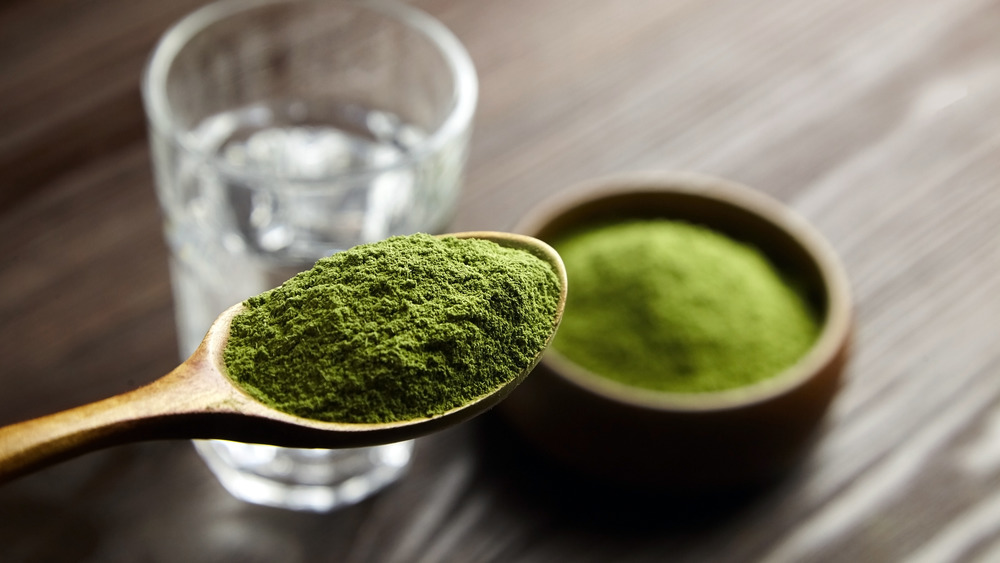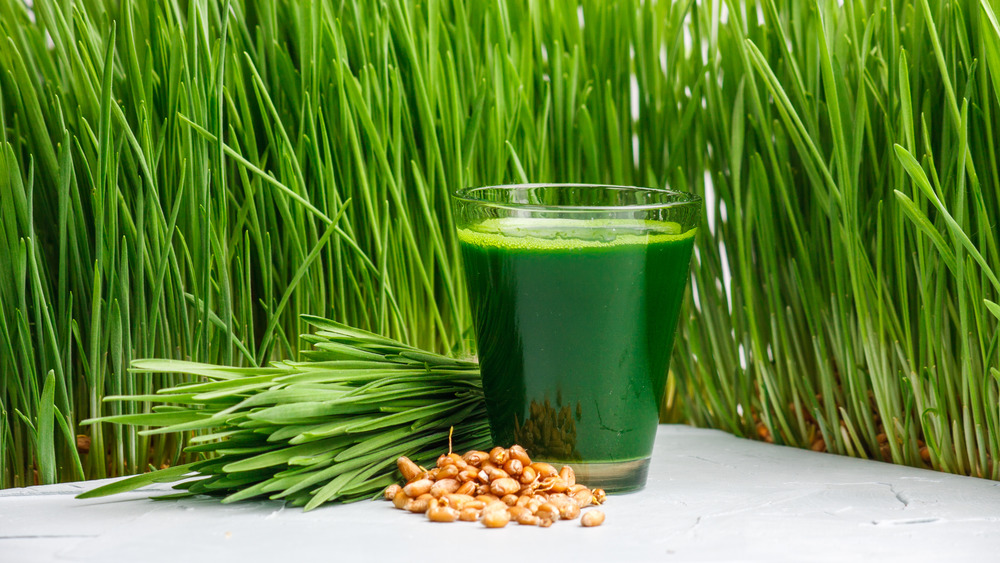Why You Should Think Twice About Eating Wheatgrass While Pregnant
There are so many things to worry about when you're pregnant, it's hard to keep up. And wheatgrass is probably not at the top of a lot of people's to-worry-about lists. But for those who are wheatgrass devotees, you've probably wondered about eating wheatgrass while pregnant.
As Kristen Johnson Brogan, R.D., told Well+Good, "Wheatgrass is one of the highest sources of chlorophyll due to its rich deep green color." She continued, "Chlorophyll is extremely cleansing, detoxifying, and energizing." It's also jam-packed with vitamins C and E. Both vitamins help stave off colds, and vitamin E benefits blood vessels, too. So far, so good for you.
However, as Brent A. Bauer, director of the Department of Internal Medicine's Complementary and Integrative Medicine Program at Mayo Clinic explains, "Wheatgrass is usually grown in soil or water and consumed raw, which means it could be contaminated with bacteria or mold." That means you shouldn't really eat it when pregnant.
Too much wheatgrass can cause nausea or headaches
And even if you are not pregnant, you kinda need to watch how much wheatgrass you consume because there can be some surprising (and unwelcome) side effects. "Over-consuming wheatgrass could result in nausea or headaches and it's important to look out for any allergic reactions you may have to wheatgrass when consuming it," Charlotte Stirling-Reed from SR Nutrition explained to Huffington Post. Oh, and it might even give you stomach pain, or your poop could turn green (via Greatist).
Ultimately, when it comes to your pregnancy (and what you can and can't eat as well as what you can and can't do), you need to speak to your medical professional about what's right for you, your body, and your baby. But remember, whenever you're in doubt, just avoid! It's the easier option and, as per usual, it's better to be safe than sorry.

